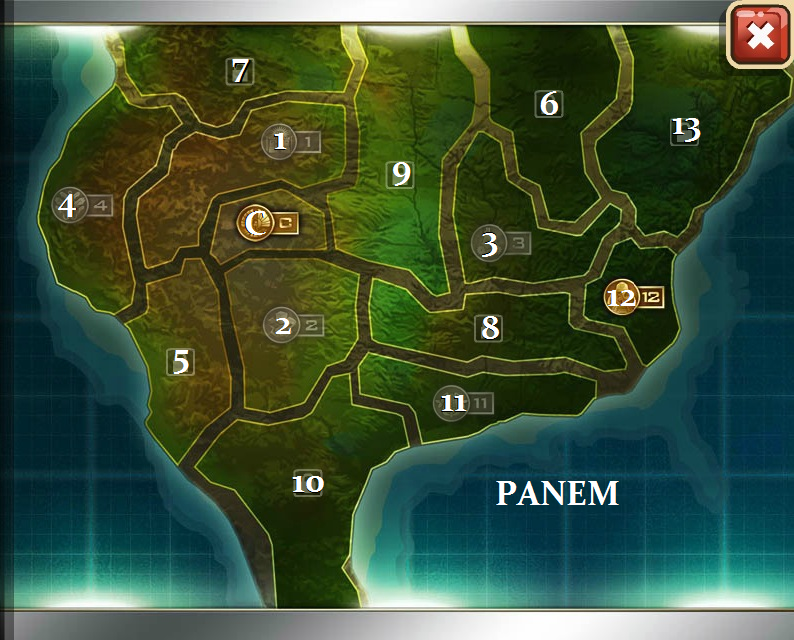The Hunger Games. How did such a barbaric game become
so popular? How did President Snow acquire so much power? These are the
questions I hope to answer within this blog by addressing the establishment of
popular culture, manipulation of space, and the different ideologies that
affect groups of people.
Public
Space
To create popular culture, it takes decades of
layering events, changes, beliefs, and much more. O’Brien and Szeman outline
the beginnings of current culture in terms of entertainment; from the rag beginnings
of sports popularity in the form of street games and blood sports of the 19th
century to the lavish music halls and sports arenas that attract tens to hundreds
of thousands of eager customers today. Urbanization and privatization of once
public land greatly reduced the available space for recreational activities,
which allowed for landowners to take some control of what activities were permissible
or banned (O’Brien & Szeman). As time goes on, the middle-class begins to
form and twice removes the working class from the wealthy. Space becomes
property of all but the working class: the government, the upper-class, and the
middle-class.
Soon enough, the government began to take control of public
spaces. They created parks and community spaces that permitted certain
activities and banned recreation in the streets as to not “disrupt more ‘legitimate’
commercial activities”(O’Brien & Szeman). To prohibit these activities, they
create measures of surveillance to monitor public spaces and address those that
disobey.
Surveillance
 |
| Map of Panem: Capitol in Center |
 |
| Panopticon |
The Capitol constantly monitors everything and punishes
violators with lashings, death, and avox-ification. In the Hunger Games
themselves, Katniss can always feel a camera on her at all times and knows to
control her actions and words. This is no different to the rest of Panem who
understands that surveillance is a part of their social contract to live within
the Capitols control. District 12 is forgotten about, which ultimately helps them to break the enclosure and to remain unseen. This breaks the culture, breaks the disciplining, and forms a distaste of the games among all citizens.
President
Snow
So how did the Hunger Games become so popular? Well
over the 74 years preceding the Hunger Games that we witness in Suzanne Collins
first book, control over the districts led to forced consumption. Perhaps
sometimes by force or physical conditioning, but most likely by the lack of
other forms of recreation and this elusive sense of sophistication in enjoying
them. Years passed as
the Hunger Games continued to gain support in light of the crude and vicious acts that happened on television. People bonded to it, bonded together behind it, and celebrated the victors that brought back food to their districts. After the apocalypse, perhaps it served to unify the people and make them all feel as equals. Enter Snow.
the Hunger Games continued to gain support in light of the crude and vicious acts that happened on television. People bonded to it, bonded together behind it, and celebrated the victors that brought back food to their districts. After the apocalypse, perhaps it served to unify the people and make them all feel as equals. Enter Snow.
As president, Snow begins to allow more people to face
hunger. The games become a necessity as the rich keep winning the Capitol
continues to binger themselves and live freely. The districts grow anxious at
the lack of resources and attempt to rebel, to which the Capitol bombs the district
most responsible to control the others. Snow begins to further this panopticon-esque
formation of the Capitol in the center to control the divided districts.
He implements the fore-mentioned surveillance to scare
workers into a complacent and docile labor force. People grow scared to rebel,
constantly reminded by the agents of fear placed around them: images of
District 13, white roses of Snow’s garden, Peacekeepers, and more. Snow also
keeps beacons of hope, such as the victors’ houses found in each district.
Through his manipulation of thing-power, discipline, surveillance, and space he
succeeds in controlling the citizens of Panem.
Works
Cited
Bennett, Jane, 1957-. Vibrant Matter : a
Political Ecology of Things. Durham :Duke University Press, 2010.
Foucault, Michel, 1926-1984. Discipline
And Punish : the Birth of the Prison. New York :Pantheon Books, 1977.
O'Brien, Susie and Szeman, Imre : “The
History of Popular Culture .” Popular Culture: A User's Guide, International
Edition, by Susie O'Brien and Imre Szeman, Langara College, 2019, pp. 29–56.

No comments:
Post a Comment